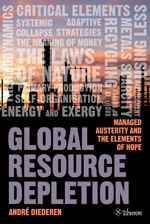It’s Jam Band Friday – http://www.youtube.com/watch?v=xvYsBlg4QEM
:}
http://www.professorshouse.com/your-home/environmentally-friendly/energy-efficient-shingles.aspx
Energy Efficient Roof Shingles
Home > Your Home > Environmentally Friendly > Articles > Energy Efficient Roof Shingles
 The right roof is essential to designing an environmentally friendly and energy-efficient home. If you’ve got typical shingles or hot asphalt on your roof—as many homeowners do—you could be doing better. Below are a few cutting-edge roofing techniques that can cut your energy costs and make your house greener at the same time.
The right roof is essential to designing an environmentally friendly and energy-efficient home. If you’ve got typical shingles or hot asphalt on your roof—as many homeowners do—you could be doing better. Below are a few cutting-edge roofing techniques that can cut your energy costs and make your house greener at the same time.
Use recycled shingles. If you want an environmentally friendly roof, the worst thing you can do is install 15-year, non-recycled shingles. These are among the most disposable building materials, are hardly ever recycled, and contain toxic volatile organic chemicals that evaporate under the heat of the sun. This means that just by sitting under the sun and heating up, your home is releasing toxic chemicals into the air. For a greener option, use recycled asphalt shingles that use reclaimed materials, reducing waste. These shingles often have a 50-year lifespan instead of 15, so you won’t have to replace them as often.
:}
http://www.youtube.com/watch?v=kilR-4rQS5g
:}
Consider metal. Metal roofs are more energy-efficient than shingles. Metal roofing is typically made from aluminum, copper, or steel, and you should ensure that your roofing is lead-free. Metal does not have the kind of heat-absorption qualities shingles have, so it will absorb and radiate less heat into your home. In fact, the right color metal will actively reflect sunlight, keeping your home cooler in hot summer months when the sun is most intense. Metal roofing also stands up to the elements better than shingles typically do—it’s the best for rainwater catchment systems, and snow slides off it easily.
Reflective coatings. To make your shingled roof more energy-efficient, brush a reflective coating on. Uncoated shingled roofs typically absorb around 80% of the sunlight that hits them—heating your home in the summer and driving up your air conditioning bill. A coated roof, however, can reflect about 80% of heat—giving you significant energy savings.
Clay and slate. Two natural materials that make excellent green roofing choices, clay and slate are both energy-efficient, can be disposed of without pollution, and are much less toxic than shingles. Corrugated clay tiles encourage air flow on the surface of the roof, keeping the home cool in the summer. However, hail will shatter it, which is why it’s typically only used in warmer climates. Slate is far more durable—it can last up to 100 years with minimal maintenance. Slate can also be reclaimed and recycled.
:}
http://www.youtube.com/watch?v=9B7YeDmmTFc
:}
Building-integrated photovoltaics (BIPV). This is a roofing system that’s coated with a film that converts sunlight into electricity—a solar-power coating for your roof. This system uses tiles or shingles, and the electric current flows on the edge of the roof. The tiles look like slate, and can be installed by most roofers—an electrician will also be needed to hook the solar-energy system up to your home’s electrical system. The charge it generates isn’t huge—about 1 kilowatt of energy per 100 square feet of tile
Roof turbines. Companies in the Netherlands, Scotland, and Britain are developing small turbines designed to install on roofs and convert wind power into home electricity. The turbines are typically around six feet across, and are usually mounted on the roof or a pole. Roof turbines feed energy into a converter, which transforms it into electricity for home use. They can typically provide enough power to operate lights, a refrigerator, a television, and a computer—providing significant energy savings. However, the amount of energy an individual house sees will depend on how windy its location is
:}
More next week.
http://www.youtube.com/watch?v=1EAog6Crv7c
:}









